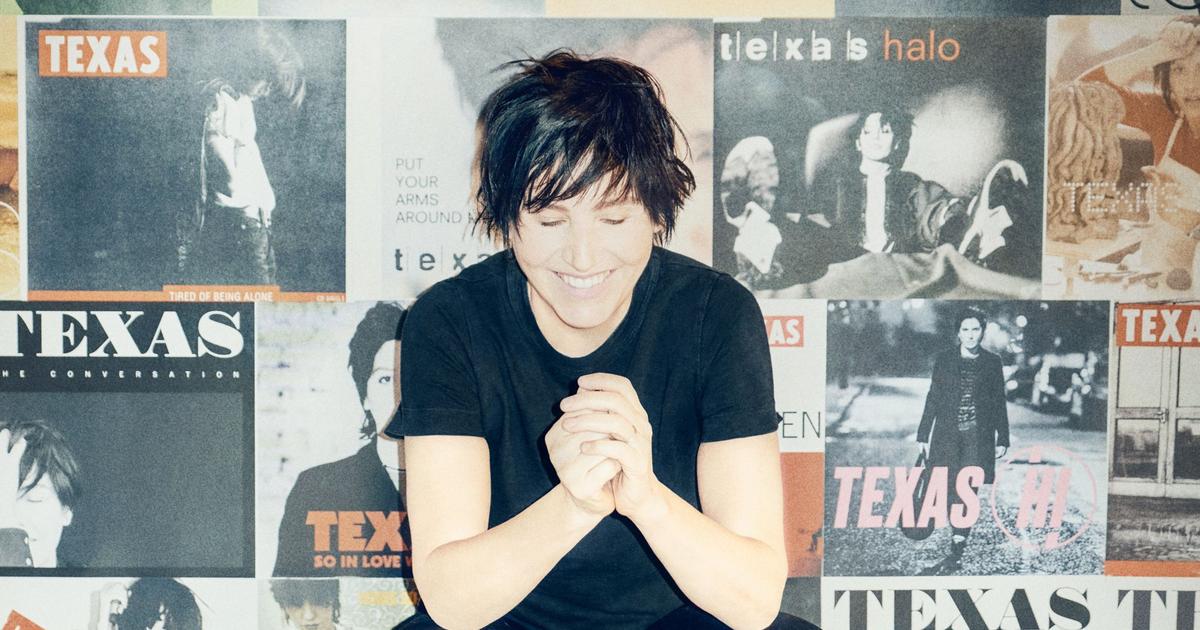Enlarge image
Photo: Patrick Piel / Gamma-Rapho / Getty Images
"Bob Dylan was my hero," says Reinhard Straach, "and he has remained so to this day."
When the man from the small town of Herzberg in Brandenburg talks about the American singer, songwriter and poet, his enthusiasm can be felt in every sentence.
The artist, who has been a Nobel Prize winner in literature since 2016, has probably never had a bigger fan.
Straach describes himself somewhat ironically as "Dylan's greatest admirer in the northern galaxy".
For the eightieth birthday of his idol on Whit Monday, the now 64-year-old invited a few good friends, all music fans like him.
Hanno and Corinne have already agreed, Hubertus and Katrin will probably come too.
Together they want to hear records from the past, but also dig out their guitars and sing a few of the old songs: "Hey, Mister Tambourin Man" maybe, or "Like a rolling stone".
And, of course, remember the fall of 1987.
Especially on that unforgettable evening when the world's most famous protest singer performed in person in the GDR, in front of around 100,000 listeners on the Treptower Festwiesen in Berlin, a sensation.
And the moment when Reinhard Straach suddenly took center stage, was interviewed by reporters and photographed dozens of times, famous for a quarter of an hour.
A long time ago - but still present.
Enlarge image
Dylan fan Straach and the well-known photo
Photo: Günter Schulze
Whenever the legendary concert is remembered in the media, a certain photo is almost never missing: Dylan fan Straach with sunglasses and a dark beard, proudly holding up a large oil painting with the US artist's likeness in the midst of the huge crowd.
To the right of him you can see his girlfriend at the time, behind him his sister is smiling.
The first record for 100 Ostmark
How this scene came about, Straach has now told SPIEGEL - 34 years apart and with the help of his diaries, which he has kept since his youth. A journey back in time, when there was still the GDR and the Wall, when music by the class enemy from the West was officially frowned upon, but was still heard and tolerated hundreds of thousands of times.
Reinhard Straach was 20 when he became a fan of Bob Dylan, a relationship for the ages.
He was fascinated by the rebellious lyrics, the hoarse-oily singing, the wild melodies.
Was entranced by the charisma of the bard who stood on stage with guitar and clamped harmonica, unadjusted, provocative, casual.
Was deeply impressed by the artist's spectacular actions against the Vietnam War and against racial segregation, often at the side of the singer Joan Baez.
And believed in Dylan's promise of a new, better time: "The Times They Are a-Changin" ".
more on the subject
Secret places of pop music: Oh, there was Bob Dylan! By Solveig Grothe
For his first record, "Bob Dylan's Greatest Hits," Straach paid 100 Ostmark on the black market, a lot of money for a trained landscape gardener, but he didn't care. Gradually he increased his collection to 40 albums and was fervently envied. "Material value only played a minor role," says Straach, "the decisive factor was not property, but moral value." Back then, he was part of a hip music scene, a conspiratorial community in which fans of the most diverse genres such as blues, punk Gather hard rock or reggae.
"We were like a big family," remembers Straach.
"The main thing was, you felt different from the crowd, you naturally had an anti-attitude to the state and authorities." To belong, long hair was not an obligation, but it was predominant.
"We wanted to differentiate ourselves from the good boys and girls of the Communist Party youth," reports the Dylan fan.
The fact that there were a few informers among them was accepted with a shrug.
It was only afterwards who found out who was really bugging.
Singing and painting
Whenever possible, the members of the scene traveled to concerts within the GDR, whoever could afford it risked a trip to festivals in Prague at Easter or Whitsun, more was not possible.
However, everyone dreamed of the big open-air concerts in the West, in San Francisco, in Sao Paulo, in Mexico City.
"The relative narrowness was depressing," says Straach today, but it led to an important side effect: "Our community grew closer and closer together."
Like some others from the scene, he began to make music, tried to sing the songs of his great role model.
Sometimes with friends, sometimes on cabaret stages.
If he played with friends the sketches of the humorist Loriot, whom he knew from western television, he managed more and more to be creative himself.
As an amateur actor at the Herzberg Workers 'and Farmers' Theater, Straach got to know the decorative painter Rüdiger Stallinger, who is responsible for the stage sets in the theater and is still a good friend to this day. He also owes his short-term fame to the painter. Because Stallinger, who knew about his friend's passion, painted the conscious portrait of Bob Dylan, oil on canvas, 60 by 80 centimeters, and gave it to Reinhard Straach for his birthday.
"That was a handicraft," remembers the painter, who has lived in Bochum for over 30 years, has decorated large, dreary outer walls of houses and factories with naturalistic landscape motifs.
For Bob Dylan in oil, light blue hat, brightly colored bandana, orange sky, he only needed a few hours, pure routine.
He used the cover of Dylan's album "Desire" as a model.
"I just painted it in."
"Gold framed on a broomstick"
Reinhard Straach initially thought a companion's suggestion to drag the striking painting to the Dylan concert in Berlin was a crazy idea, but after a bit of back and forth, he accepted. Complications arose promptly. Because their Wartburg got stuck in traffic several times, the fans from Herzberg were late anyway and had to pick up the tickets. And because the picture still had to be nailed to a square timber, as complied with the GDR regulations for "carrying elements", further time was lost.
"When we finally passed the entrance, the stage was hundreds of meters away," remembers Straach, "tens of thousands stood close together in front of us." It seemed pointless to push ahead. But then the miracle happened: when people saw the banner with Bob Dylan's face, many applauded and spontaneously formed an alley. Straach and his friends walked through a line of enthusiastic visitors and worked their way up to 40 meters from the stage. "It was a triumphal procession," reports Straach proudly, "nobody else had anything like it in their hands." Later a newspaper read: "One of them was even there with Dylan in oil, the whole thing framed in gold on a broomstick."
There was already a euphoric mood during the preliminary program.
Most listeners found the performance of the US rock band Tom Petty & the Heartbreakers and the folk singer Roger McGuinn to be sensational.
But it got really loud when Bob Dylan finally took the stage.
Thousands of people sang along when he started his famous songs, the ballad of "Maggie's Farm" and, of course, "Blowin in the Wind".
"That's how I always imagined Woodstock to be," enthuses Reinhard Straach to this day.
The old t-shirt still fits
Enlarge image
Reinhard Straach and the painting today
Photo: Günter Schulze
The star rewound his program as routinely as he still does today on his never-ending tour.
Sang one number after the other without speaking to the audience in between, only gave a single encore, that's it.
No waving at the end, no friendly parting word.
"Didn't bother me at all," remembers his biggest fan, "this behavior was known".
And I hardly hurt the enthusiasm of the audience in Berlin.
Reinhard Straach is now retired, his hair, which was a little bit sparse in the photo, has now completely disappeared, but the old T-shirt with Dylan's curly head still fits him, at least.
And his loyalty to Bob Dylan has remained unwavering over the decades.
He endured and survived the many phases and skinning of his favorite bard: the temporary turn to Christianity, for example, which led to mystical-religious texts, the creative crisis at the beginning of the nineties, the irritating specialty of playing his most famous titles in such a way that nobody recognizes them , the complete indifference to the followers.
"Because I know that, I've never sought personal contact," he explains.
Instead, he collected music books, hoarded the lyrics of his idol, some with the German translation.
Dylan has written over 600 songs, with touching, disturbing and sometimes difficult to understand statements.
So much creativity, says his fan, should be imitated first.
On the sixtieth and seventieth birthday of his hero, Straach gave lectures, framed with a lot of music to sing along, with film clips and old photos, in his home country he has long been considered a Dylan expert. He has now heard his idol live more than ten times, in the capital, in Leipzig, in Dresden. He was always fascinated anew. But he never saw Bob Dylan as intensely as the first time in East Berlin. "That feeling lasts forever," he assures.









/cloudfront-eu-central-1.images.arcpublishing.com/prisa/RTV3XUJTRZB3LJP5QJIPHZVHAA.jpg)